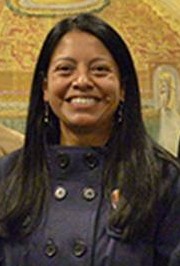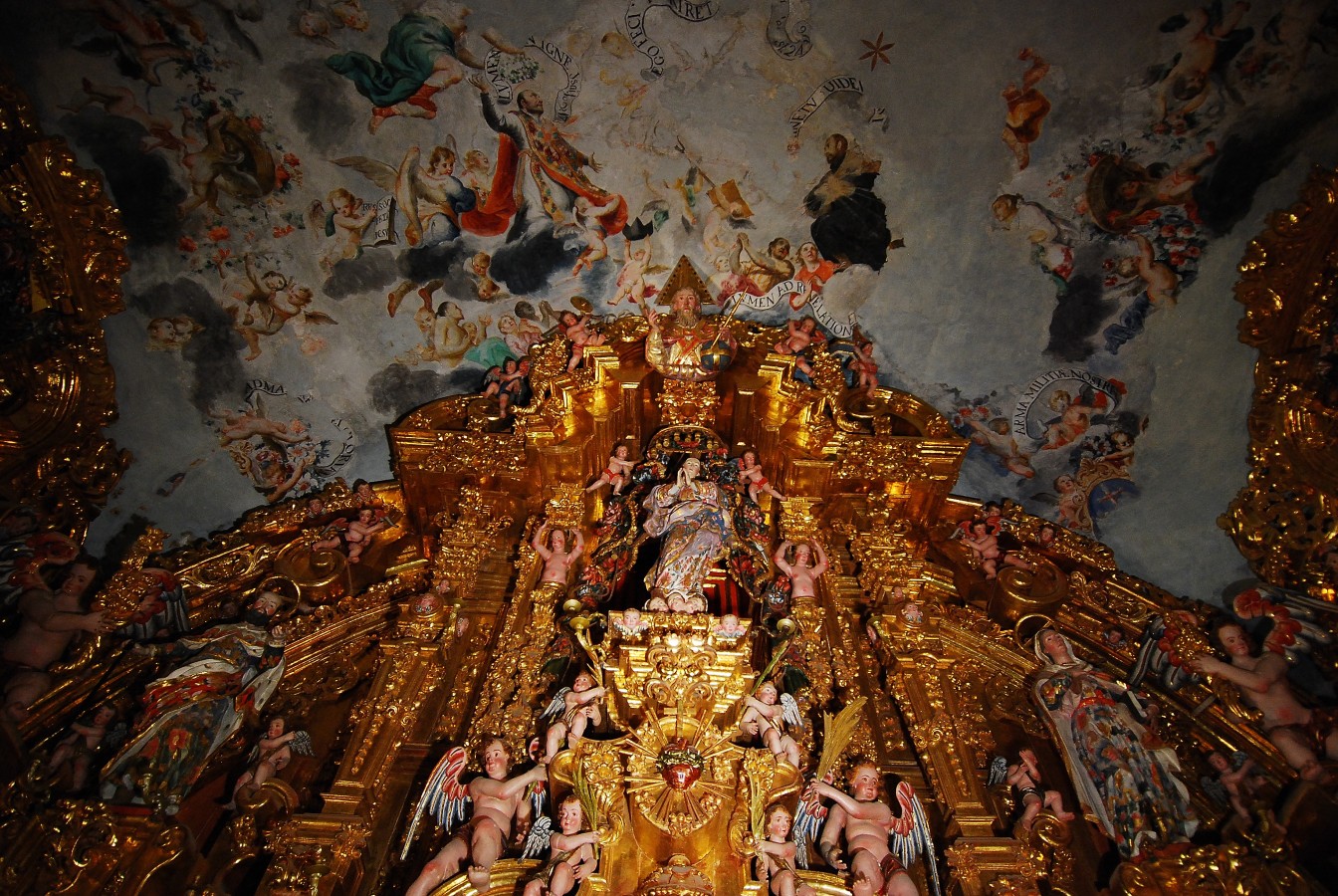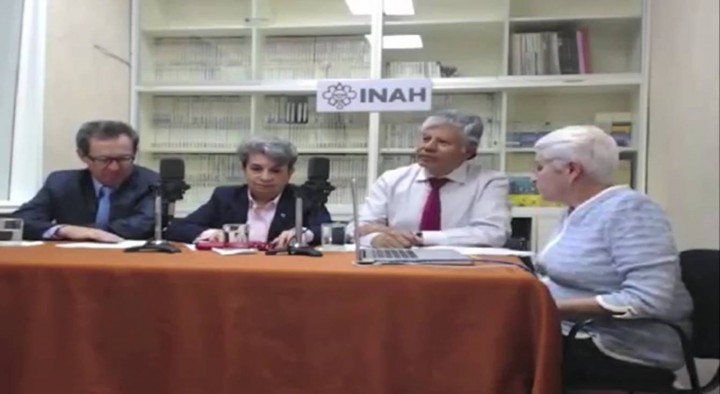Museo Nacional del Virreinato
The finest examples of the visual arts from New Spain over the three centuries of its existence, exhibited in a splendid building from this period: the Jesuit College in Tepotzotlán, which provides a brilliant, detailed journey through the viceregal period.
Nacional
About the museum
This museum displays different aspects of colonial culture, as well as the culture of the original occupants of the building it is installed in. The venue is the former Jesuit College of San Francisco Javier (Saint Francis Xavier) in Tepotzotlán, in what is now the State of Mexico. It opened on September 19, 1964, with the aim of offering an extensive overview of life under Spanish rule, as there was no museum in Mexico at the time which covered the 300 years this period lasted (1521-1821). The building itself is a marvel. Thoroughly restored, it preserves the original premises, which were built and decorated between 1606 and 1767. It includes the church with its vestry and chapel; two two-story cloisters, that of Aljibes (Wells) and Naranjos (Orange Trees), with their respective cells; the domestic chapel (of Saint Peter the Apostle), the library, the refectory and the kitchen. Teachers, students and college workers lived, studied, prayed and rested here. The building is encircled by its atrium and orchard. Adjoining the Aljibes Cloister was the guest courtyard and its stables. The cloister obliged potential guests to lodge in this zone because it was outside the restricted area. Currently, this place operates as the College’s restaurant and lodging house.
Passing through each of these spaces, some of which are decorated as they might have been in the times Jesuit novices were here, offers visitors a view of the daily lives of the people who inhabited them, as well as the opportunity to appreciate the splendid examples of baroque art found here.
The National Museum of the Vice-Regal Period ranges in time from the background to the Conquest of Mexico in 1519-1521 to the first causes of social unrest that led to the Independence movement of 1810. It consists of 22 rooms located in both the lower part of the Aljibes Cloister and the upper part of the Naranjos Cloister, and displays objects as diverse as paintings, sculpture, pottery and textiles. It also deals with female convent life in the vice-regal period, with a collection of more than 20 portraits of crowned nuns. Due to the number of portraits and their artistic and historical relevance, this is the most important one of its kind in Latin America. It also addresses the arts and crafts of New Spain, as well as the commercial and cultural exchange it held with the Orient, with its collections of ivory, porcelain, marquetry and “enconchados” (oil paintings inlaid with mother-of-pearl).
Visiting the church of San Francisco Javier is a must. It is one of the few baroque churches in Mexico that still preserves its originally characteristics. The altarpieces were designed and created by Miguel Cabrera e Higinio de Chávez in the mid-eighteenth century.
The Jesuits began to build their San Francisco Javier monastery and college of Tepotzotlán in 1606. They intended to open one school for indigenous children, another for Society of Jesus novices and one more so that novices and already-ordained Jesuits could learn the indigenous languages of New Spain. The church of San Francisco Javier was built between 1670 and 1682. Charles III of Spain “and the Spanish Indies” expelled the Jesuits from his empire in 1767, which was much lamented by many inhabitants of New Spain. The Jesuit foundation of Tepotzotlán was left totally abandoned for eight years, until the Archbishop of Mexico gave it to the secular clergy, who turned into a retreat for elderly and infirm priests, and a place of penitence for censured priests. Pope Clement XIV abolished the Society of Jesus in 1773 to curry favor with the three kings who had expelled the Jesuits from their realms (Portugal, France and Spain). When it was reestablished by Pope Pius VII in 1814, some Jesuits came back years later (possibly in 1819). A few old men of the many who had been expelled returned to New Spain and Tepotzotlán.
Owing to the Reform Laws, the College became national property in 1859, although mass was still held in the church of San Francisco Javier. There were attempts to convert the premises into a jail, but the local community would not allow it. Later on, President Porfirio Díaz considered turning the structure into a jail as well, also without success. The school for children, on the other hand, remained. During the Mexican Revolution, the pro-Carranza (and subsequently anti-Carranza) General Francisco Coss Ramos took a dislike to the teachers of Tepotzotlán, especially to Father Gonzalo Carrasco, the dean. As the dean was also a painter, the general ordered him to paint a portrait of Venustiano Carranza and told him and his colleagues to take off their religious habit. The teacher refused, so the general sent him to the Teoloyucan jail whilst he and his soldiers sacked the school and the former monastery. The Jesuits abandoned Tepotzotlán once again. From time to time, rumors arose that there was treasure buried on the premises. The floor was opened and excavations were made in the church and other parts of the building to search for it in 1928, 1931, 1932 and 1934, without anything ever being found, although some damage was done to the architecture.
The Jesuit churches and other structures of Tepotzotlán were declared a national monument in 1933. Systematic restoration work was eventually begun by the INAH in 1964, with the splendid results that President Adolfo López Mateos inaugurated in 1964. The valuable collection that the new National Museum of the Vice-Regal Period was then provided with came from the Metropolitan Cathedral’s Museum of Religious Art, the National History Museum, and donations from private collectors.
Passing through each of these spaces, some of which are decorated as they might have been in the times Jesuit novices were here, offers visitors a view of the daily lives of the people who inhabited them, as well as the opportunity to appreciate the splendid examples of baroque art found here.
The National Museum of the Vice-Regal Period ranges in time from the background to the Conquest of Mexico in 1519-1521 to the first causes of social unrest that led to the Independence movement of 1810. It consists of 22 rooms located in both the lower part of the Aljibes Cloister and the upper part of the Naranjos Cloister, and displays objects as diverse as paintings, sculpture, pottery and textiles. It also deals with female convent life in the vice-regal period, with a collection of more than 20 portraits of crowned nuns. Due to the number of portraits and their artistic and historical relevance, this is the most important one of its kind in Latin America. It also addresses the arts and crafts of New Spain, as well as the commercial and cultural exchange it held with the Orient, with its collections of ivory, porcelain, marquetry and “enconchados” (oil paintings inlaid with mother-of-pearl).
Visiting the church of San Francisco Javier is a must. It is one of the few baroque churches in Mexico that still preserves its originally characteristics. The altarpieces were designed and created by Miguel Cabrera e Higinio de Chávez in the mid-eighteenth century.
The Jesuits began to build their San Francisco Javier monastery and college of Tepotzotlán in 1606. They intended to open one school for indigenous children, another for Society of Jesus novices and one more so that novices and already-ordained Jesuits could learn the indigenous languages of New Spain. The church of San Francisco Javier was built between 1670 and 1682. Charles III of Spain “and the Spanish Indies” expelled the Jesuits from his empire in 1767, which was much lamented by many inhabitants of New Spain. The Jesuit foundation of Tepotzotlán was left totally abandoned for eight years, until the Archbishop of Mexico gave it to the secular clergy, who turned into a retreat for elderly and infirm priests, and a place of penitence for censured priests. Pope Clement XIV abolished the Society of Jesus in 1773 to curry favor with the three kings who had expelled the Jesuits from their realms (Portugal, France and Spain). When it was reestablished by Pope Pius VII in 1814, some Jesuits came back years later (possibly in 1819). A few old men of the many who had been expelled returned to New Spain and Tepotzotlán.
Owing to the Reform Laws, the College became national property in 1859, although mass was still held in the church of San Francisco Javier. There were attempts to convert the premises into a jail, but the local community would not allow it. Later on, President Porfirio Díaz considered turning the structure into a jail as well, also without success. The school for children, on the other hand, remained. During the Mexican Revolution, the pro-Carranza (and subsequently anti-Carranza) General Francisco Coss Ramos took a dislike to the teachers of Tepotzotlán, especially to Father Gonzalo Carrasco, the dean. As the dean was also a painter, the general ordered him to paint a portrait of Venustiano Carranza and told him and his colleagues to take off their religious habit. The teacher refused, so the general sent him to the Teoloyucan jail whilst he and his soldiers sacked the school and the former monastery. The Jesuits abandoned Tepotzotlán once again. From time to time, rumors arose that there was treasure buried on the premises. The floor was opened and excavations were made in the church and other parts of the building to search for it in 1928, 1931, 1932 and 1934, without anything ever being found, although some damage was done to the architecture.
The Jesuit churches and other structures of Tepotzotlán were declared a national monument in 1933. Systematic restoration work was eventually begun by the INAH in 1964, with the splendid results that President Adolfo López Mateos inaugurated in 1964. The valuable collection that the new National Museum of the Vice-Regal Period was then provided with came from the Metropolitan Cathedral’s Museum of Religious Art, the National History Museum, and donations from private collectors.
September 1964
Map
An expert point of view

Verónica Zaragoza
Museo Nacional del Virreinato
Practical information
Plaza Hidalgo No. 99,
Barrio San Martín, C.P. 54600,
Tepotzotlán, Estado de México, México.
Barrio San Martín, C.P. 54600,
Tepotzotlán, Estado de México, México.
Public transport to Tepotzotlán is available at both the Cuautitlán and Lechería stations of the Tren Suburbano.
Using the Metro, from Toreo station (Line 2) and El Rosario station (Line 6), there is a bus service to Tepotzotlán.
By car, take Periférico Norte towards the Mexico-Queretaro highway.
-
+52 (55) 5876 2770 ext. 412829
-
This email address is being protected from spambots. You need JavaScript enabled to view it.
-
WWW
-
FACEBOOK
-
TWITTER
Directory
Dirección
Dra. María Amparo Clausell
This email address is being protected from spambots. You need JavaScript enabled to view it.
(55) 5876 2770 ext. 412801 y 412802
Subdirección
Patricia Zapata Villasana
This email address is being protected from spambots. You need JavaScript enabled to view it.
+52 (55) 5876 2770 ext. 412821
Administración
Héctor Manjaréz Alba
This email address is being protected from spambots. You need JavaScript enabled to view it.
Atención al público y Servicio Social
Pedro Rodríguez Ramírez
This email address is being protected from spambots. You need JavaScript enabled to view it.
+52 (55) 5876 2770 ext. 412829
Atención a Medios
Cristina Gutiérrez Colín
This email address is being protected from spambots. You need JavaScript enabled to view it.
+52 (55) 5876 2770 ext. 412831
Comunicación educativa
Alicia Martínez López
This email address is being protected from spambots. You need JavaScript enabled to view it.













































